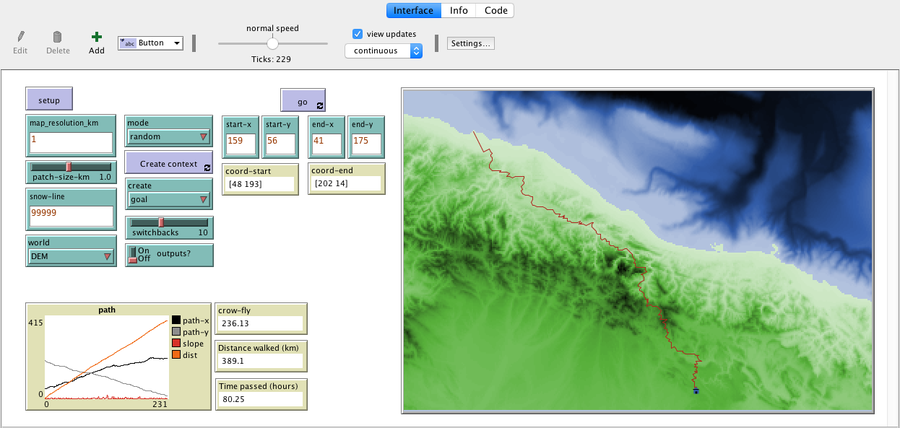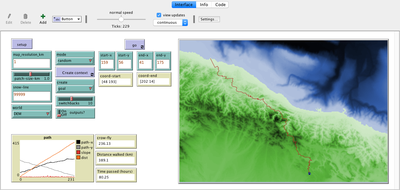Least cost path mobility 1.2.0
This model tries to mimic human behavior in a topographical environment. It aims to go beyond the GIS approach to least-cost path that requires perfect knowledge of the whole environment to choose the best path between two points. This model is different in that the agent does not have a perfect knowledge of the whole surface, but rather evaluates the best path locally, at each step, thus mimicking imperfect human behavior more accurately. It relies on the work by Naismith (1892, in Aitken 1977) and Langmuir (1984) on walking time expenditure in rugged environments. Their walking time values are used to calculate the agent’s travel time.
v. 1.3.0 introduces the Lorentz mobility algorithm, created by Campbell et al. (2019) using fitness trackers. It also allows for multiple hikers and goals.

Release Notes
This new release fixes a bug that stopped the model when using “Import-2” mode if iter-start and iter-end were the same number even if those sites were not the same on the landscape.
It also allows using the maps without having to move them to a different folder.
